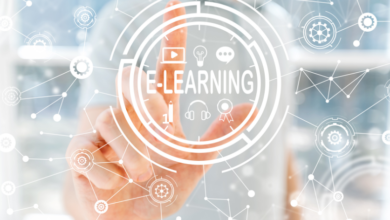Driving Innovation | Evolution of Facial Recognition Services in Identity Verification

Facial recognition services have rapidly evolved by driving innovation in the industry of face authentication. This evolution has revolutionized how businesses and industries authenticate individuals by moving beyond traditional methods to more secure and efficient solutions. From enhancing security protocols to streamlining customer experiences, facial recognition services have become integral in ensuring reliable identity verification processes. Let’s dive deep into the dynamic workings of facial recognition services and highlight their pivotal role in shaping the future of identity verification.
Global Facial Recognition Services: Market Analysis and Trends
The facial recognition market is expected to grow a lot in the future. There are some real-time analyses in the facial industry:
- In 2024, it should be worth about $4.94 billion. Every year from 2024 to 2030, it will increase by about 9.34%.
- By 2030, the market will be worth about $8.44 billion.
- The biggest market for facial recognition will be in the United States, worth about $1.32 billion in 2024.
Facial Recognition Solution – Beyond the Basics
A facial recognition solution is a technology system capable of matching a user’s face from a virtual image or video structure against digital templates stored in authorized databases. It extracts the physical features of the users or customers from the video or photo and aligns them with the data already stored. It is a commonly used solution due to its contactless nature. Facial recognition services lie in diverse industries such as security, access control, law enforcement departments, identity verification, surveillance, and digital onboarding.
Operational Mechanism of Face Recognition Process – A Complete Guide
Face recognition services are the advanced solutions in this digital landscape due to their nature of authenticity in different industries. The working mechanism of the face recognition process has various steps of execution, which are given below:
- The initial stage of the face recognition process starts with the identification of the face within a larger picture or scene. This step involves the differentiation of the facial features from the ambient environment and identifying their facial locations within the frame.
- Once the face is identified, advanced algorithms thoroughly analyze the face according to its geometric features and assess different critical points on the face. These specific key marks are called landmarks or nodal points, which involve the length between the eyes, outlines of the cheekbones, nose, lips, and facial form of the jawline.
- The deep examination results in the extraction of the facial characteristics, which are utilized to create the face template and facial signature. A facial signature is the electronic chart of the face geometry.
- This facial chart is then analyzed against data repositories of the known faces. It is being executed utilizing advanced matching algorithms that can manage changes in lighting, angles, and appearances.
- Convolutional neural networks (CNN) are widely used technologies for converting every facial structure with numeric code, and every framework is expressed as a numeric array. Closer vectors identify the authenticity of the user’s face.
Face Recognition Deep Learning: Facial Authentication with Neutral Networks
Face recognition deep learning is an advanced technology that utilizes neural networks to identify and verify customer’s faces. By deep learning on extreme datasets of facial images, these networks learn to recognize unique facial features with high accuracy. The work detects a face in an image, extracts critical features like the distance between the eyes or the shape of the jaw, and compares these features to a database of known faces. This technology finds applications in security systems, smartphones, and social media platforms. It enhances user experience and security by enabling fast and reliable facial authentication.
AI Face Recognition Online – Understand the Major Role of Algorithms in Verifying Facial Features
AI face recognition online uses advanced algorithms to validate users according to their facial features through internet-connected devices. This technology captures an image of a person’s face and analyzes unique characteristics by leveraging AI (artificial intelligence). These advanced algorithms scrutinize the features and identify results in real time. Online face recognition can quickly and accurately confirm identities by enhancing security for applications like banking, online shopping, and access to secure systems. This method reduces the risk of identity fraud and simplifies user authentication. This complete procedure offers a seamless and contactless verification process.
Final Verdict
Facial recognition services have emerged as a foundation of modern identity verification by offering accuracy and convenience in authenticating individuals. The integration of facial recognition technology has enhanced security measures by streamlining processes and reducing operational complexities. As businesses continue to prioritize identity verification solutions, facial recognition services stand out as reliable and innovative measures. With ongoing advancements in digital systems, these verification services play an important role in shaping the future landscape of identity verification by ensuring a secure authentication experience for businesses and customers.





